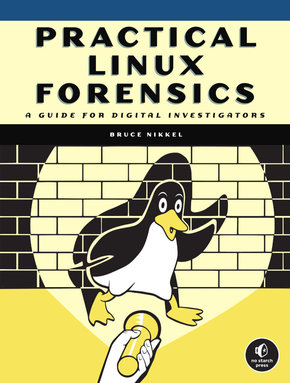
Practical Linux Forensics - A Guide for Digital Investigators
| Verlag | No Starch Press |
| Auflage | 2021 |
| Seiten | 400 |
| Format | 17,9 x 2,3 x 2,4 cm |
| Gewicht | 743 g |
| Artikeltyp | Englisches Buch |
| EAN | 9781718501966 |
| Bestell-Nr | 71850196UA |
A resource to help forensic investigators locate, analyze, and understand digital evidence found on modern Linux systems after a crime, security incident or cyber attack.
Practical Linux Forensics dives into the technical details of analyzing postmortem forensic images of Linux systems which have been misused, abused, or the target of malicious attacks. It helps forensic investigators locate and analyze digital evidence found on Linux desktops, servers, and IoT devices. Throughout the book, you learn how to identify digital artifacts which may be of interest to an investigation, draw logical conclusions, and reconstruct past activity from incidents. You ll learn how Linux works from a digital forensics and investigation perspective, and how to interpret evidence from Linux environments. The techniques shown are intended to be independent of the forensic analysis platforms and tools used.
Learn how to:
Extract evidence from storage devices and analy ze partition tables, volume managers, popular Linux filesystems (Ext4, Btrfs, and Xfs), and encryptionInvestigate evidence from Linux logs, including traditional syslog, the systemd journal, kernel and audit logs, and logs from daemons and applicationsReconstruct the Linux startup process, from boot loaders (UEFI and Grub) and kernel initialization, to systemd unit files and targets leading up to a graphical loginPerform analysis of power, temperature, and the physical environment of a Linux machine, and find evidence of sleep, hibernation, shutdowns, reboots, and crashesExamine installed software, including distro installers, package formats, and package management systems from Debian, Fedora, SUSE, Arch, and other distrosPerform analysis of time and Locale settings, internationalization including language and keyboard settings, and geolocation on a Linux systemReconstruct user login sessions (shell, X11 and Wayland), desktops (Gnome, KDE, and others) and analyze keyrings, wallet s, trash cans, clipboards, thumbnails, recent files and other desktop artifactsAnalyze network configuration, including interfaces, addresses, network managers, DNS, wireless artifacts (Wi-Fi, Bluetooth, WWAN), VPNs (including WireGuard), firewalls, and proxy settingsIdentify traces of attached peripheral devices (PCI, USB, Thunderbolt, Bluetooth) including external storage, cameras, and mobiles, and reconstruct printing and scanning activity
Inhaltsverzeichnis:
Introduction
Chapter 1: Digital Forensics Overview
Chapter 2: Linux Overview
Chapter 3: Extracting Evidence from Storage Devices and Filesystems
Chapter 4: Directory Layout and Forensic Analysis of Linux Files
Chapter 5: Investigating Evidence from Linux Logs
Chapter 6: Reconstructing System Boot and Initialization
Chapter 7: Examination of Installed Software Packages
Chapter 8: Identifying Network Configuration Artifacts
Chapter 9: Forensic Analysis of Time and Location
Chapter 10: Reconstructing User Desktops and Login Activity
Chapter 11: Forensic Traces of Attached Peripheral Devices
Afterword
Appendix A: File and Directory List for Digital Investigators
